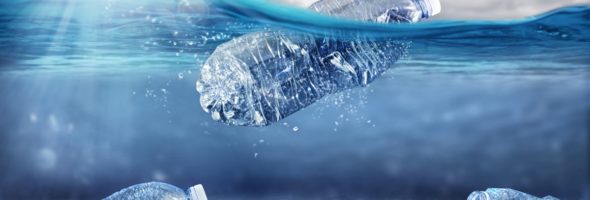 Grades: 5 – 6
Grades: 5 – 6
Curricular Competency:
- Identify some of the social, ethical, and environmental implications of the findings from their own and others’ investigations
- Contribute to care for self, others, and community through personal or collaborative approaches
Curricular Content: solutions and solubility (Grade 5), heterogeneous mixtures and mixtures (Grade 6)
Summary
In this demonstration, the instructor will show students a strategy to extract microplastics from a body of water. It may be worth noting that this strategy was devised by a teenager named Fionn Ferreira in Ireland who was driven to find a solution to the climate problem of microplastics in the ocean when noting the state of the waters around his hometown. Microplastics in bodies of water is an issue for a variety of reasons. When microplastics are ingested by marine organisms, they can create blockages in their gastrointestinal tracts, and give them the sensation of being full without actually acquiring the nutrients required for survival. Moreover, as we will see in this demonstration, by virtue of having a neutral charge, plastics attract other substances that are also neutral. These substances might include various types of oils and toxins. This proves to create more problems for organisms who ingest these small pieces of plastic which are now coated in harmful toxic materials.
Notes for Teachers
- Ferrofluid is a fluid containing a magnetic liquid in which tiny iron particles are suspended in a solution like oil. By mixing magnetite powder and oil we can magnetize the oil mixture!
- Plastic particles and oil are both nonpolar, meaning their molecules have no separation of charge, so no positive or negative poles are formed.
- In chemistry, nonpolar things attract nonpolar things (i.e. like attracts like).
- Since both oil and plastic is nonpolar they stick together! By adding the magnetite powder to the solution, the oil becomes magnetic thus pulling out all microplastics binded to it.
- Even through the microplastics are so small, and might look as though they’ve dissolved in the water (i.e. a solution), the plastic still maintains its own molecular structure, thus making the mixture heterogeneous.
Materials:
- 1 Large beaker (around 500 mL)
- 1 Test tube
- 4-5 small magnets, or a magnetic rod
- Stir stick
- Water
- Light vegetable oil
- Plastic lids
- Sandpaper
- Magnetite powder (Fe3O4)
Description or diagram of the setup:
- Prepare Microplastics by rubbing a recycled container lid over coarse sandpaper. It helps to use coloured plastic so that students can observe the mixture.
- Prepare Ferrofluid: In a small container/beaker, mix equal parts magnetite powder and vegetable oil. For this experiment we mixed approximately 1 teaspoon of vegetable oil (preferably light) with 1 teaspoon of black iron oxide powder (Fe3O4). This is what we call a ferrofluid.
- Fill test tube with magnets.
- Have paper towels ready to clean test tube with.
Procedure:
Step 1: Fill large beaker with water.
Step 2: Add microplastics to the water and stir.
After adding microplastics ask students what they observe. Where are the plastics? Are then mixed into the water or separate?
Step 3: Talk about ferrofluid & ask students to make predictions about what will happen when ferrofluid is added to the beaker.
“What do you think will happen when the ferrofluid is introduced into the water containing the microplastics?”
Step 4: Add ferrofluid to beaker. Have students record their findings (ferrofluid should fall to the bottom, collecting small amounts of microplastics with it).
Step 5: Mix the ferrofluid into the water.
Have students record what they observe once the ferrofluid has been mixed into the water. What happened to the microplastics? (the ferrofluid should have binded with all the microplastics in the water)
“What will happen when magnets are introduced into the fluid?”
Step 6: Using small magnets in a test tube, run test tube through the mixture. The ferrofluid and microplastics will be attracted to the magnets allowing you to pull it out of the water. Wipe the test tube off with a paper towel and repeat until you have collected all the ferrofluid.
Open up the paper towel to show students what has been pulled out of the water.
Step 7: In the end, you should be left with clear plastic-free water in the beaker!
Questions:
- Why did the microplastics bind with the oil?
- How was the oil and plastic solution able to be pulled out of the water?
- How might this experiment be applied to the real world?
- How could you scale this?
- What concerns might there be with applying this experiment to the real world?
- Is the water better off or worse than when there were microplastics throughout?
- What else might the ferrofluids bind with in the ocean?
- What challenges are posed?
Safety Considerations
- Consuming iron oxide can be quite dangerous. Ensure students know not to consume, even though we are working with other edible products.
- Considerations around fragility of glass. Since we are working with a glass beaker and stir stick so mixing should be conducted with caution.
- Safety goggles should be worn by students standing around the mixture in order to protect their eyes from the possibility of ferrofluid being splashing out of beaker.
Graphic Organizer


